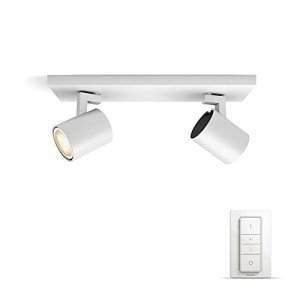10 Easy Steps To Start Your Own Contemporary Lighting UK Business
Contemporary Lighting in the UK: Transforming Spaces with Illumination
Lighting plays an essential function in specifying the atmosphere and functionality of any area. In the UK, contemporary lighting has actually become a significant style aspect, offering ingenious services that mix aesthetics with usefulness. This short article digs into the various styles, products, and innovations forming contemporary lighting, together with tips for selecting the most ideal fixtures for different settings.
The Evolution of Contemporary Lighting
Contemporary lighting in the UK reflects the altering tastes and technological improvements in style. It encapsulates a broad selection of designs, consisting of:
Minimalist: Characterized by simplicity and tidy lines, minimalist lighting fixtures focus on kind and function without unneeded embellishments.
Industrial: Inspired by city settings, industrial lighting combines basic materials like metals and woods with bold designs, developing edgy, practical pieces.
Scandinavian: Known for its warmth and simpleness, Scandinavian lighting frequently features soft colors and natural materials, focusing on creating a cozy atmosphere.
Smart Lighting: This modern pattern incorporates technology with design, enabling users to control their lighting with mobile apps, voice commands, or automation systems.
To highlight the evolution and variety in the field of contemporary lighting, think about the table listed below, which highlights key qualities of various styles.
Style
Key Characteristics
Popular Materials
Perfect Spaces
Minimalist
Simple, functional designs
Metal, glass, wood
Modern homes, workplaces
Industrial
Raw, unfinished appearance
Steel, concrete, wood
Lofts, galleries
Scandinavian
Comfortable, warm aesthetic appeals
Natural fibers, light wood
Living spaces, coffee shops
Smart
Integrated innovation, automation
Varies widely
Residences, offices, retail spaces
Choosing Contemporary Lighting Fixtures
Picking the ideal lighting fixtures for a space requires mindful factor to consider of several elements. Here are crucial elements to bear in mind:
1. Purpose of the Space
Before picking fixtures, consider the desired use of the area. Various functions require various kinds of lighting:
- Task Lighting: Focused illumination for activities such as reading, cooking, or studying. Examples consist of table lamps and under-cabinet lights.
- Ambient Lighting: General lighting that provides general illumination. Ceiling lights and pendant fixtures fall under this classification.
- Accent Lighting: Designed to highlight specific functions or locations, such as artwork or architectural information. Wall sconces and track lighting are common choices.
2. Design and Theme
The lighting ought to match the existing decor. Select fixtures that match or enhance the overall theme of the area, whether it's contemporary, rustic, or diverse.
3. Size and Scale
Think about the proportion of the lighting fixtures relative to the space. A big chandelier may look spectacular above a roomy table, while smaller sized pendant lights work well in compact settings.
4. Energy Efficiency
With rising energy costs and ecological concerns, selecting energy-efficient lighting choices is vital. LED lights are an outstanding option, offering durability and lower energy consumption.
5. Versatility
In modern style, adaptability is essential. Fixtures that can be adjusted or rearranged enhance performance, allowing users to develop different environments as needed.
Popular Contemporary Lighting Brands in the UK
The contemporary lighting market in the UK boasts many brand names known for their innovative styles and quality craftsmanship. Some notable mentions include:
- FLOS: An Italian brand celebrated for its creative and renowned light fixtures that frequently double as pieces of art.
- Tom Dixon: A British designer recognized for his modern, industrial styles that beautifully integrate metal and light.
- Anglepoise: Known for its flexible, practical lamps, perfect for a range of settings from office to innovative studios.
- John Lewis: Offers a range of contemporary lighting solutions that deal with a wider audience, including affordable yet stylish options.
Frequently Asked Questions about Contemporary Lighting in the UK
1. What is contemporary lighting?
Contemporary lighting describes lighting styles and fixtures that show existing design patterns, typically identified by tidy lines, innovative shapes, and making use of modern products and innovations.
2. How do I pick the ideal lighting for my home?
Think about the function of the room, existing décor, size of fixtures, energy effectiveness, and versatility. Evaluate how each piece will add to the total ambiance and functionality of your area.
3. What are some energy-efficient lighting alternatives offered in the UK?
LED lights are the most prominent energy-efficient alternative, known for their long life-span and low energy usage. Compact fluorescent lights (CFLs) and halogen bulbs are other options.
4. Where can Full File buy contemporary lighting in the UK?
Contemporary lighting can be found in different retail outlets, both online and in physical stores. Significant merchants include John Lewis, Habitat, and specialized lighting shops.
5. Can contemporary lighting work in traditional spaces?
Absolutely! Contemporary lighting can enhance traditional areas when selected thoughtfully. Choosing fixtures with a balance in between modern and timeless elements can create a harmonious design.
Contemporary lighting in the UK represents more than just lighting; it embodies style development and imagination, changing areas and boosting performance. As patterns continue to progress, house owners and designers alike can check out an extensive series of styles and innovations, ensuring that every room bursts with life, warmth, and character. By thinking about the essential elements outlined in this article, one can curate a collection of lighting fixtures that resonates with personal design and satisfies practical needs, ultimately forming comfortable and visually attractive environments.
